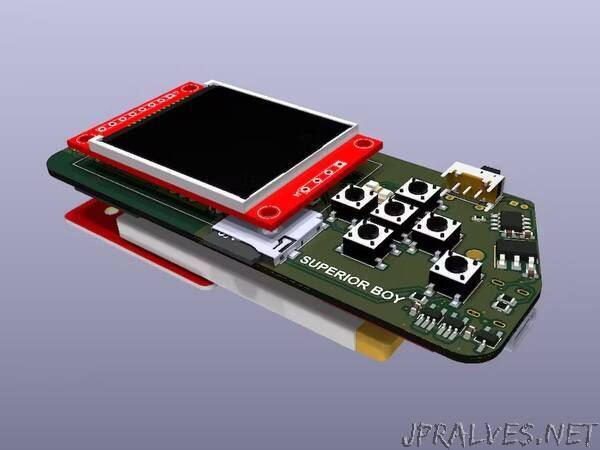
“Superior Boy is Cybersecurity, education, and research in one advanced device. Everything a mobile cybersecurity pro needs.
Superior Boy, combining the power of RP2040 and ESP32 microcontrollers, encompasses all the hardware and features that a cybersecurity expert would need on the go. With this versatile device, you get Wi-Fi (ESP32), Bluetooth (ESP32), Sub-1 GHz transceiver(CC1101), 2.4 GHz transceiver(NRF24), NFC/RFID (PN532), Infrared transceiver-receiver, 9-Axis Gyroscope (MPU9250), Barometer (BMP280), MicroSD card support, a display (ST7735sTFTRGBScreen), and a control unit. With our own software, interfaces, and GPIO pins, you can easily access all the features of the device and integrate your own development boards and software.
Getting Started
- ESP32: It offers essential Wi-Fi and Bluetooth capabilities for wireless communication, enabling the device to connect to networks and communicate with other devices.
- CC1101: It can operate on all frequencies below 1 GHz, allowing the device to be used in a wide range of applications.
- NRF24: A transceiver that provides wireless communication in the 2.4 GHz band.
- PN532: It enables interaction with NFC and RFID technologies.
- Infrared Transceiver-Receiver: Used for infrared communication.
- MPU9250: Used to detect motion and track the device’s position.
- BMP280: Used to measure atmospheric pressure.
- MicroSD Card: Support for data storage using a MicroSD card.
- ST7735s TFTRGB Screen: Provides visual feedback and displays information.
- Control Unit: Manages all these components and facilitates user interaction with the device.
- Customizable Software and Interfaces: Provides access to the device’s features and makes it easy for users to integrate their own development boards and software.
Core Functions
- Bad USB/HID: This function enables the “Superior Boy” device, through the RP2040, to inject malicious software into a computer system or act as a Human Interface Device (HID) via a USB connection. HID emulation allows the device to be recognized as an input device, such as a keyboard or mouse, enabling it to automatically send specific key presses or mouse clicks to gain access to computer systems. This feature assists cybersecurity experts in simulating malicious software attacks and detecting security vulnerabilities.
- Jammer: The Jammer function provides the capability, using the CC1101, NRF24, and ESP32 modules, to disrupt, block, or interfere with wireless communication. This means the device can render Wi-Fi, Bluetooth, LoRaWan, ZigBee, Z-Wave, or other wireless communication protocols ineffective. It is especially useful for assessing network security vulnerabilities because it allows testing how a network responds to such attacks and its vulnerability.
- NFC/RFID Read, Write and Emulator: This function, facilitated by the PN532 module, enables the device to interact with NFC (Near Field Communication) and RFID (Radio-Frequency Identification) technologies. Users can read and write NFC and RFID cards and even emulate these cards. This is valuable for testing and improving the security of physical access control systems.
- Sub-1 GHz and 2.4 Ghz Scanner: The device, with the CC1101 and NRF24 modules, has the capability to scan wireless communication devices operating on specific frequencies. Sub-1 GHz and 2.4 GHz scanning allows users to detect and analyze devices operating in these frequencies. This is a valuable skill for cybersecurity professionals to evaluate the security of their networks and identify specific devices.
- WiFi Scanning: The device can scan and analyze Wi-Fi networks. Users can detect nearby Wi-Fi networks, identify network security vulnerabilities, and conduct security testing. This function is crucial for cybersecurity assessments and network analysis.
- Beacon Spamming: This function includes the device’s ability to broadcast beacon signals for Bluetooth or other wireless networks. Beacon signals can encourage other devices to join specific networks or gain covert access to networks. Beacon spamming can be used to test network security vulnerabilities and perform penetration tests.
- Infrared Transceiver: The Infrared Transceiver function is used for infrared communication. Users can transmit and receive infrared signals, making it easier to interact with devices like TV remotes or other infrared-equipped devices.
- Playing Basic Games: The device can run basic games, providing some entertainment for cybersecurity experts during breaks or while intensively working.
- IoT: IoT (Internet of Things) functionality includes access to, management of, and security testing for IoT devices. IoT devices are often targeted due to security vulnerabilities, and “Superior Boy” serves as a useful tool for evaluating and securing these devices.”
